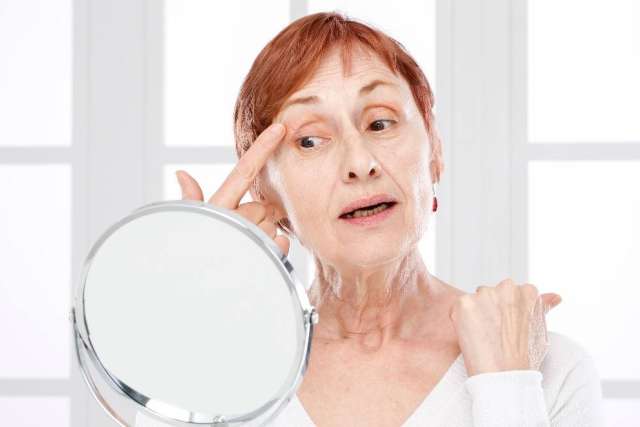Dear Doctor: I’m a 60-year-old woman with naturally fair skin. I’ve worked outdoors all of my life -- and now I have the age spots on my face to prove it. Why do they happen? Are there any creams from the drugstore that might help to fade them?
Dear Reader: Age spots are the darkened areas of skin that develop on parts of the body that have been regularly exposed to sunlight. They often appear on the shoulders, backs of the hands, arms, back and face. People who are balding and don’t regularly wear head coverings while outside may develop them on their scalps.
Age spots often look like freckles of varying sizes, and they range in color from light tan to dark brown. While it’s true that age spots, which are sometimes referred to as sun spots or liver spots, become more common as we get older, they can appear on any skin that has had chronic overexposure to sunlight.
When you develop age spots, it’s your skin’s way of letting you know you’ve gotten too much sun. They form in response to UV light, which accelerates pigment production. Unlike cancerous and pre-cancerous growths, which they can resemble, age spots don’t require medical treatment. However, for cosmetic reasons, many people prefer that they be removed, or at least lightened.
Treatments vary. Fade creams and lotions typically use hydroquinone, glycolic acid or kojic acid. Nonprescription versions of these products are available at your local drugstore. More powerful fade creams, with higher concentrations of the active ingredients, are available by prescription. While they tend to lighten the spots, they may not completely remove them. Plus, you have to be patient. It can take weeks, or even a few months, of consistent use to see an improvement. Even when using nonprescription fade creams, it’s a good idea to get guidance from your health care provider, since the active agents can cause side effects.
For more complete results, there’s laser therapy, which targets and destroys specific pigments. Cryotherapy, which involves freezing the skin, and acid peels, to exfoliate the skin, are also sometimes used. Each of these can cause side effects, such as pain, excessive dryness, blistering, redness and swelling.

Whichever approach you take, it’s crucial to also stop exposing your skin to sunlight. Use a full-spectrum sunscreen, stay in the shade and cover your skin. That means wearing long sleeves, long pants, hats, scarves or gloves as needed. Some of our patients have invested in SPF clothing, which they find quite helpful. Others use an umbrella to block the sun while outdoors.
Unless you take steps to minimize sun exposure, age spots will return, and new ones may form. It’s also important to note that some cancerous and pre-cancerous growths can start out looking like age spots. We recommend that all adults regularly monitor the moles, marks and birthmarks on their skin for changes in size, color, shape and texture. This should be in addition to an annual skin cancer screening by a health care professional, which is a visual exam that is often covered by insurance.
(Send your questions to [email protected], or write: Ask the Doctors, c/o UCLA Health Sciences Media Relations, 10880 Wilshire Blvd., Suite 1450, Los Angeles, CA, 90024. Owing to the volume of mail, personal replies cannot be provided.)





